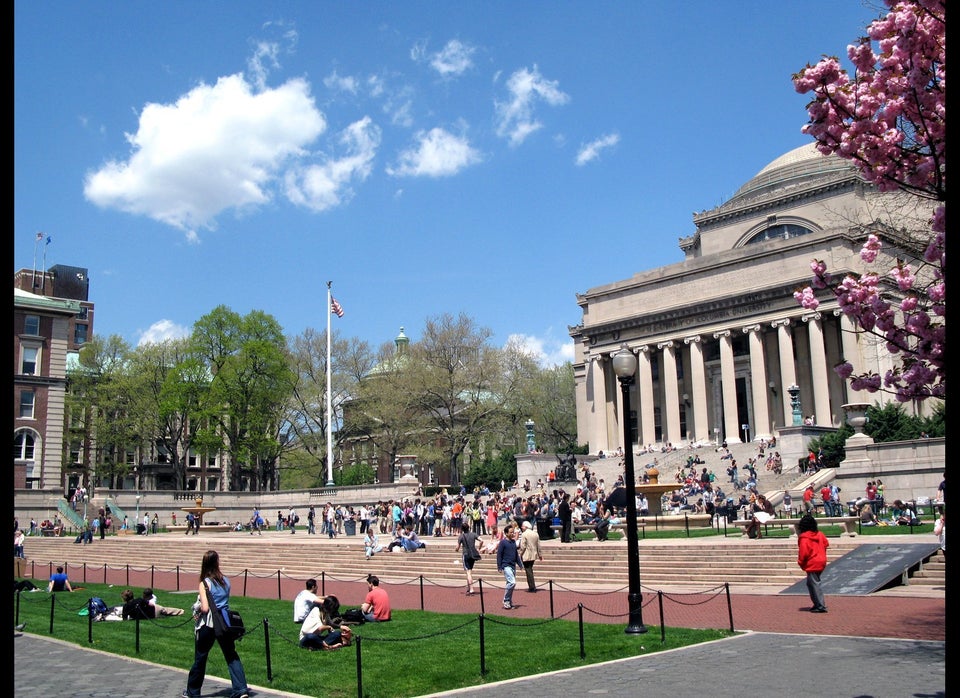When it comes to math skills, Alabama performs like Armenia, Mississippi comes close to Dubai, Washington, D.C., performs like Ukraine, and Massachusetts is just one rung below Japan, according to a study released by the U.S. government Wednesday.
In science, Mississippi and Alabama look a lot like Kazakhstan, D.C. is close to Bahrain, and Massachusetts edges out Taiwan.
The study is the first to show where U.S. states would rank on the international exam Trends in International Math and Science Study, or TIMSS. Students in most U.S. states don't take TIMSS, so U.S. statisticians approximated results using the National Assessment of Educational Progress, the largest U.S. comprehensive standardized test.
The results are mixed. Thirty-six U.S. states scored higher than the international math average of 500, out of a possible 1,000 points. On average, Americans would have scored 509 on math, according to the study. In science, 47 states would have performed higher than the average of 500. Three performed lower, and two were tied. Americans would have averaged a 525 on science. Massachusetts and Vermont topped the U.S. results in both subjects.
While the average U.S. scores look respectable, the result masks a deficit in U.S. performance. Students in even the highest-scoring states don't match the top-performing countries.
"The bad news it that students in even our highest-performing states -- Massachusetts and Vermont -- cannot compete in math with students from the highest performing education systems, such as Korea, Singapore, Hong Kong, and Taiwan," U.S. Secretary of Education Arne Duncan said in a statement. He added: "The shortage of U.S. students testing at advanced levels underscores the importance of setting high standards, benchmarked to international performance -- instead of dummying down expectations for student performance, as many states did during the last decade."
The results come as many in the U.S. wonder just how bad American education is. So-called education reformers often use alarmist rhetoric along with international comparisons to make the case for overhauling schools. Their opponents tend to parse the data differently. Jack Buckley, who heads the government arm that produced the report, expects the same reaction to this latest puzzle piece. "People with a particular agenda will seize upon one dimension of the story," he said.
The report had been scheduled to be released earlier in October, but was delayed by the government shutdown. Since 2011, the data wonks at the U.S. Education Department's statistics arm, the National Center for Education Statistics, have tried statistical models to link the national and international exams. Buckley, the center's director, said Wednesday that all that tinkering made him fairly confident that the reported state scores would reflect actual TIMSS test scores if U.S. students had taken the international test.
The TIMSS results exclude economic powerhouses like China and India, said Michael Petrilli, the executive vice president at the Thomas B. Fordham Institute, a right-leaning think tank. So the new study can make the U.S. look better than it really is in a broad international ranking.
Still, Petrilli said the results can be revealing for low-performing U.S. states. "It shows the not-so-developed countries that our states end up being in the company of," Petrilli said. "It'll be helpful rhetorically in states toward the bottom of the list where people are still trying to make the case for school reform. They can say, 'Hey, we are on par with third-world countries and we can't compete in the global economy. We've got to do much better.'"
The report also includes data on education spending. The U.S. spends 6 percent of its gross domestic product on education. That figure is similar to Ghana, Morocco, New Zealand and Saudi Arabia. It's higher than Korea, Taiwan and Japan and double Kazakhstan. But it's less than Tunisia and Norway.
